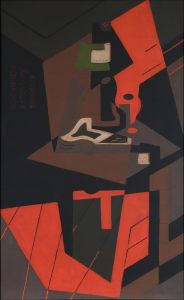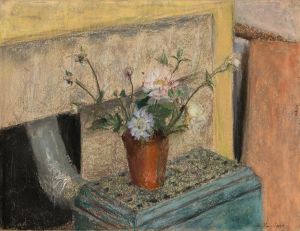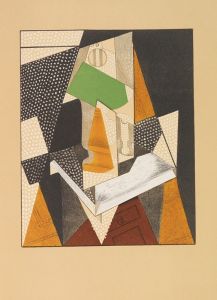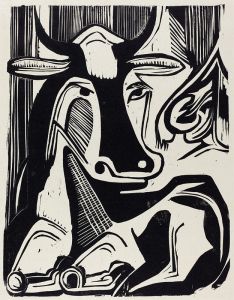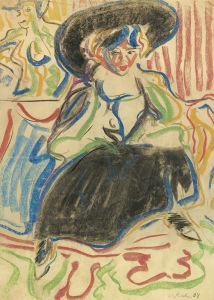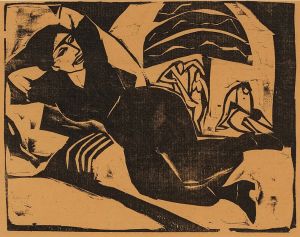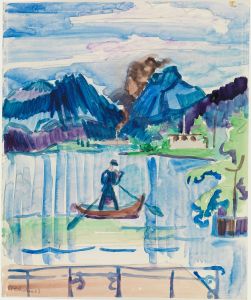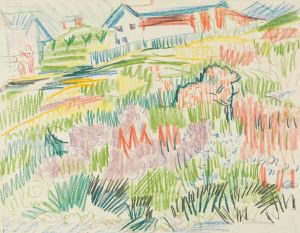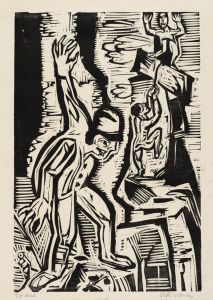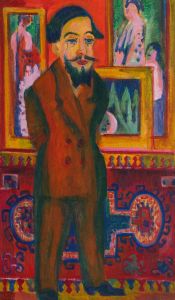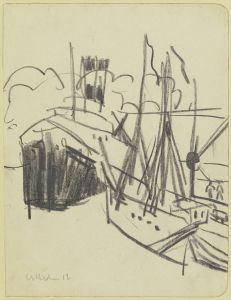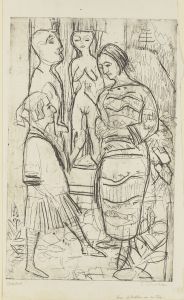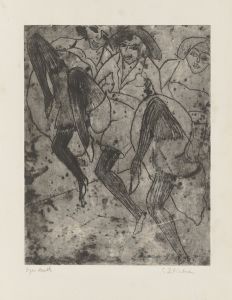
Nacktes Mädchen auf Diwan
A hand-painted replica of Ernst Ludwig Kirchner’s masterpiece Nacktes Mädchen auf Diwan, meticulously crafted by professional artists to capture the true essence of the original. Each piece is created with museum-quality canvas and rare mineral pigments, carefully painted by experienced artists with delicate brushstrokes and rich, layered colors to perfectly recreate the texture of the original artwork. Unlike machine-printed reproductions, this hand-painted version brings the painting to life, infused with the artist’s emotions and skill in every stroke. Whether for personal collection or home decoration, it instantly elevates the artistic atmosphere of any space.
"Nacktes Mädchen auf Diwan" (Nude Girl on a Divan) is a painting by the German expressionist artist Ernst Ludwig Kirchner. Created in 1906, this work is a notable example of Kirchner's early style, which was heavily influenced by the German Expressionist movement and his involvement with the artist group Die Brücke (The Bridge).
Ernst Ludwig Kirchner was born on May 6, 1880, in Aschaffenburg, Germany. He studied architecture in Dresden before fully committing to painting. In 1905, Kirchner, along with Fritz Bleyl, Erich Heckel, and Karl Schmidt-Rottluff, founded Die Brücke. This group sought to create a new form of artistic expression that would bridge the past and the future, hence the name "The Bridge." They were inspired by the works of Post-Impressionists like Vincent van Gogh and Paul Gauguin, as well as by African and Oceanic art.
"Nacktes Mädchen auf Diwan" exemplifies Kirchner's interest in the human form and his desire to capture the raw, unfiltered essence of his subjects. The painting depicts a nude young woman reclining on a divan, rendered in bold, vibrant colors and dynamic brushstrokes. The use of color and form in this painting is characteristic of Kirchner's style, which often emphasized emotional intensity and a sense of immediacy.
The composition of "Nacktes Mädchen auf Diwan" reflects Kirchner's fascination with the human body and his commitment to exploring themes of sexuality and intimacy. The relaxed pose of the model, combined with the intimate setting, creates a sense of vulnerability and openness. Kirchner's use of color—particularly the contrast between the warm tones of the woman's skin and the cooler hues of the background—enhances the emotional impact of the painting.
Kirchner's work during this period was also influenced by his interest in non-Western art forms. He admired the simplicity and directness of African and Oceanic art, which he felt offered a more authentic and primal form of expression. This influence is evident in the stylized forms and bold outlines of "Nacktes Mädchen auf Diwan," which reflect Kirchner's desire to break away from traditional European artistic conventions.
Throughout his career, Kirchner faced numerous personal and professional challenges. He struggled with mental health issues and addiction, and his work was often met with mixed critical reception. Despite these difficulties, Kirchner remained a prolific and influential artist. His contributions to the Expressionist movement and his innovative approach to form and color have left a lasting impact on the art world.
In 1937, the Nazi regime in Germany condemned Kirchner's work as "degenerate art," and many of his paintings were removed from museums and destroyed. This period was a difficult time for Kirchner, who had already been struggling with his mental health. He eventually took his own life on June 15, 1938, in Frauenkirch, Switzerland.
Today, "Nacktes Mädchen auf Diwan" is recognized as an important work in Kirchner's oeuvre and a significant example of early 20th-century German Expressionism. The painting is held in high regard for its bold use of color, dynamic composition, and emotional depth. It continues to be studied and appreciated by art historians and enthusiasts alike, serving as a testament to Kirchner's enduring legacy as a pioneering artist.





